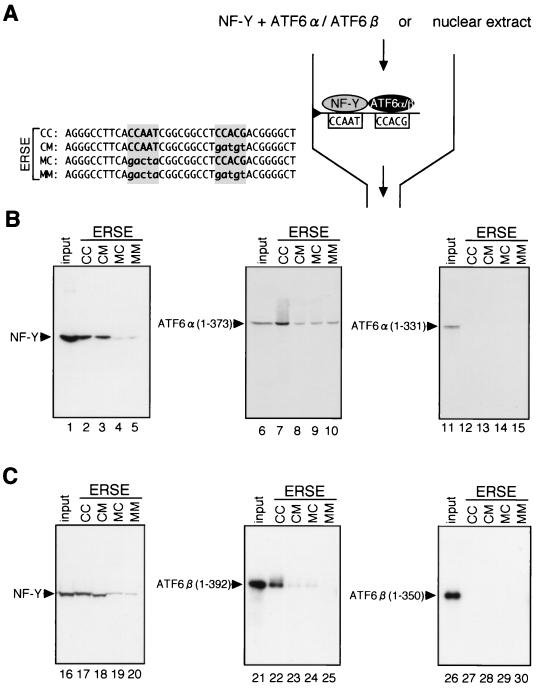FIG. 8.
In vitro reconstitution of ERSF consisting of NF-Y and ATF6α or ATF6β. (A) Nucleotide sequences of oligonucleotides immobilized on resin. A 37-bp sequence containing GRP78-ERSE1 and its flanking nucleotides is referred to as ERSE-CC. Two critical regions of ERSE (shaded) were mutated separately or simultaneously (indicated by lowercase letters) to generate ERSE-CM, ERSE-MC, and ERSE-MM. Each of the synthetic double-stranded oligonucleotides was immobilized on resin. Principles of assays to analyze formation of ERSF are shown schematically on the right. (B and C) Binding of ATF6α(B) and ATF6β (C) in the presence of NF-Y to resin carrying ERSE-CC. Various subregions of ATF6α and ATF6β labeled with [35S]methionine during in vitro translation were mixed with recombinant NF-Y trimer and applied to resin to which one of the four oligonucleotides (ERSE-CC,-CM,-MC, or -MM) had been immobilized. After washing, bound materials were eluted and subjected to SDS–12% PAGE together with 10% aliquots of input material. Eluted NF-Y was detected by immunoblotting using anti-NF-YA antibody, whereas eluted ATF6α and ATF6β were visualized by exposure to X-ray film.

